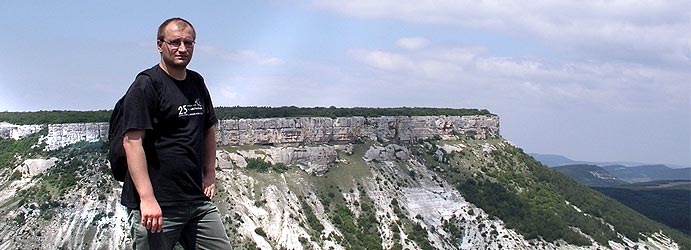|
|
 |
|
|
[1]
[2]
[3]
[4]
[5]
[6]
Time of war or well-being? Changes in weapon sets in the Przeworsk culture burials from the late stage of phase B2
The excavations, conducted in Masłomęcz for a quarter of century, are only marginally connected with military equipment, for, like at the sites of other Goth circle cultures, weapons practically did not appear there (the only piece of weaponry known from the Masłomęcz group is a bronze arrowhead from grave 162 in Gródek nad Bugiem, Hrubieszów commune (Kokowski 1993, p. 111, fig. 136c)); the grave goods seldom included spurs (Kokowski 1995, p. 57). Despite that the problems of weapons, also those found in Przeworsk culture burials, were taken up by the head of Masłomęcz excavations (e.g. Kokowski 1994; 1994a; 2000; Kokowski, Ku¶nierz, Urbański 1997). The above reasons allow to hope that the present discussion of weaponry will not be considered as out of place in this publication.
This paper deals with the late stage of phase B2 (subphase B2b). The presentation of the processes discussed here is based on the data collected by the author for his doctoral dissertation (Kontny 2001)[1]. The conclusions about the importance of the period in question are drawn on the basis of an analysis of various aspects of the custom of furnishing burials with weapons.
One of the key issues is the study of differences in the numbers of weapon graves from respective phases of the Late Pre-Roman and Roman Periods. The problem is presented in a bar chart (Diagram 1). It presents the changes in numbers[2] and alterations of a coefficient expressed by the relation of the number of weapon graves from a given phase to the approximate duration of this phase (frequency). The diagram reveals that weapon graves appearing in small numbers in phase A1 become clearly more frequent in the following phases, and the increment is maintained until phase B2a, when their numbers begin to decline. In phase B2b the discussed value grows clearly (three times), and then a considerable fall occurs in phase B2/C1. The number of burials with weapons continues to decline in the following phases. The above results are not wholly conclusive, as they do not take into consideration the fact that the analysed phases had different durations. To eliminate this difficulty a time coefficient[3] was introduced: the numbers for respective phases were divided by the approximate durations of the phases, and the results were multiplied by 100. For respective phases the following durations were adopted: A1 - 50 years (early 2nd century B.C.), A2 - 90 years (from the first decades of the second half of the 2nd century B.C. till ca mid-1st century B.C.), A3 - 60 years (from ca mid-1st century B.C. till the end of the first decade A.D.)[4], B1 - 75 years (till ca 75/80 A.D.), B2a - 35 years (last quarter of the 1st century - early 2nd century A.D.), B2b - 50 years (till ca 160 A.D.), B2/C1 - 40 years (till ca 200 A.D.), late part of phase C1a and phase C1b - 60 years (till ca 260 A.D.), C2-D - 140 years (till the early 4th century A.D.)[5]. Of course it should be realized that such an approach may bring unavoidable simplifications[6].
The picture obtained by these means differs in some points from the one obtained through a simple comparison of the numbers: the difference of frequency between phases A1 and A2 is not so great (although still considerable), in phase A3 the increase is greater than originally presumed; the decrease of frequency of weapon graves in phase B2a is not significant, and there is an equally clear increase of the number of such burials in phase B2b[7]. The decrease in the number of graves with weapons in later phases is clear for both methods of presentation, although when the frequency is analysed, it is more pronounced, especially for the pairs of chronological periods: B2/C1[8] and the late stage of phase C1a-C1b, on the one hand, and late part of C1a-C1b and phases C2-D, on the other. In the discussion of the above data one should not disregard the fact that in the Younger Roman Period the territory occupied by the Przeworsk culture decreased (the areas to the east of the Vistula had been occupied by the Wielbark culture settlements)[9]. This probably resulted in a certain decrease in the number of burials with weapons. Thus the beginning of the Younger Roman Period probably did not see a considerable fall of the proportion of burials with weapons among all burials, but such a decrease did take place in the late stage of phase C1a and phase C1b.
To sum up, the analysis of the diagram reveals a constant, moderate increase of the number of burials with weapons from the beginnings of the Late Pre-Roman Period till phase B2a, after which there takes place a clear, sudden increase connected with phase B2b. In phase B2/C1 the number of burials with weapons begins to decline (moderately at the outset and pronouncedly from later stage of phase C1), ending with a minimum index for phases C2-D[10]. Not discussing this diagram in greater detail, it is worth to note the particular position occupied by the late stage of phase B2. The culmination in phase B2b is not reflected in the tentative assessments of the population changes, which indicate that it was the most numerous in phases B2b and C1 (Godłowski 1985, p. 156), and perhaps even C1a (see Domański 1994, fig. 1-2). However, Diagram 1 indicates that for the burials with weapons this period is shorter (B2b and, to a lesser extent B2/C1), which may be considered as a more precise and dynamic presentation of changes observed by J. Okulicz (1985) and K. Godłowski (1985), possible thanks to the broadened material base and more exact chronology established since that time. According to the current state of research it seems that the increase of the frequency of burials with weapons exceeded the general population growth[11].
[1]
[2]
[3]
[4]
[5]
[6]
[1] The Catalogue included in the dissertation contains 1357 weapon graves from the Przeworsk culture dating to the Roman Period. Before conducting the statistical analysis a selection was made in order to exclude the disturbed burials and ones with unclear contexts of discovery, i.e., found accidentally or by unprofessional excavators. As a result only 894 assemblages were used for the statistical analysis. The chronological divisions are based on those made by K. Godłowski in his studies of the chronology of weapon graves (Godłowski 1992; 1994; 1994a (phase B1 corresponds to his groups 1-2, phase B2a to group 3, B2b to group 4, B2/C1 to group 5, late stage of C1a and phase C1b, to group 6, phases C2-D to groups 7a, 7b, and 8). K. Godłowski's assignations are complemented by the classification of shaft weapon heads (Kaczanowski 1995) (contrary to the current opinion some head types may serve as a surprisingly exact dating elements). Occasionally, in order to shed light on a longer time perspective of the analysed phenomena, also data from the Late Pre-Roman Period are taken into consideration (after Kontny 2002). I'm aware of possible distortions of ancient reality, resulting from statistical method. They are also immanently connected with the same process of scrutinizing an archaeological material, which is far from the "vivid culture" ("lebende Kultur" as coined by H. J. Eggers 1951). I've discussed this problem in the other paper (Kontny 2002a, p. 91-92).
[2] Due to the terminological unclarities appearing in literature (see e.g., Fletcher, Lock 1995, p. 28-29; Łomnicki 1999, p. 28) I would like to stress that I understand the number as the number of cases of occurrence of a given category and frequency as a parameter determined most often by the relation of the number of cases (measured) to the size of population.
[3] The best solution would be to refer these data to the number of all burials found for the Przeworsk culture from respective chronological periods, yet such a compilation considerably exceeds the scope of this paper. A comparison of the number of burials with the duration of chronological phases was applied by Jerzy Okulicz (1985) in his population analysis of the Przeworsk culture cemeteries, yet his method of presentation differs in some respects from the one adopted in this paper.
[4] Dating of the chronological stages of the Late Pre-Roman Period after T. D±browska (1988, p. 62).
[5] Dating of the chronological stages of the Roman Period after K. Godłowski (1985 and, first of all, later presentations focusing on weapon burials - 1992, 1994; see also Kozłowski, Kaczanowski 1998, p. 265-278).
[6] They result from the uncertainty whether the duration of respective phases is determined properly (especially for the beginnings of the Late Pre-Roman Period and later stages of the Younger Roman Period) as well as the fact that the transitory periods, e.g., A2/A3, A3/B1 are not taken into consideration (see D±browska 1988, p. 62; Godłowski 1985, p. 34-35, 41-42) due to the small number of burials found for these periods. It seems, however, that these factors do not disturb in any greater way the veracity of the obtained picture, which reflects the real changes resulting from the number of weapon burials. Only for phase B2/C1 and the later part of C1a-C1b the discrepancies may be more serious, because of certain problems in assessing the exact borderline between phases C1a and C1b in terms of absolute chronology (see Kaczanowski 1992, p. 71-72; 1994, p. 139-140; 1994a, p. 49-50; Godłowski 1994, Fig. 1, p. 174-175; 1994a, p. 118).
[7] A considerable number of burials taken into consideration (64) is broadly dated to phase B2. It is difficult to assess how many of them should be ascribed to phase B2a or B2b. However, even a small increase in the number of burials in phase B2a would result in a pronounced increase of frequency (the number referred to the approximate duration of the phase) of weapon burials in that phase. In such a case the frequency of weapon graves in phase B2a would be similar or maybe even greater than that in phase B1. Such a situation seems probable. It is, however, impossible, that even after ascribing the majority of these burials to phase B2a, the differences in frequency between phases B2a and B2b would be alleviated.
[8] The considerable number of burials (47) is dated together to phases B2b-C1a. In this case the difference in frequency between phases B2b and B2/C1 might have been diminished, although it is highly improbable that it could be completely obliterated.
[9] The simultaneous appearance of Przeworsk culture settlements in the area south of the Carpathian mountains did not result in a sufficiently large number of weapon burials archaeologically excavated (fulfilling the criteria adopted for this paper) to alleviate this deficiency.
[10] The existing conclusions about the changes in the number or frequency of weapon graves in the Przeworsk culture consisted so far only in stating the increase of their number from the Late Pre-Roman Period lasting until a peak in the first half of the 3rd century A.D. (which is approximately equivalent to phase C1) (Godłowski 1960, p. 80-81) or perhaps also in the 2nd half of the 2nd century A.D. (Kietlińska 1963, p. 69) (phase B2/C1) and a clear decline of their importance from the end of phase C1b (Godłowski 1992, p. 84).
[11] Justifying this phenomenon with an epidemic, decimating the warriors (a suggestion of professor A. Bursche, for which I am grateful) seem not very probable, especially in the light of other data on the analysed period (the population growth had its economic basis, perceptible, i.a., in the grave assemblages), although it can not be completely excluded.
|
|
 |
 |

